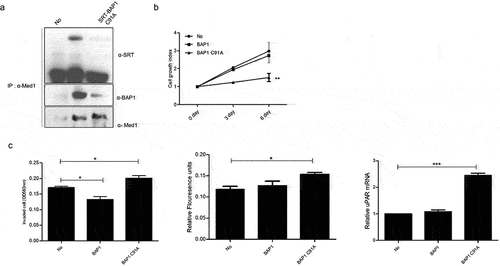Figures & data
Figure 1. The Med1 expression was regulated through DUBs overexpression.

Figure 2. Med1 protein and mRNA expression through BAP1 overexpression.

Figure 3. Med1 interacted with BAP1 and regulated growth and metastatic ability.

Figure 4. Med1 protein and mRNA expression through BAP1 overexpression in lung cancer cells.

